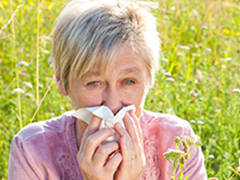Know the Skin You’re In: Identifying and Treating Rashes

Our skin is an incredible organ that keeps us protected from the dangerous illnesses that live in our environment. But, as with every part of our bodies, skin can be susceptible, too. This guide will help you diagnose some of the most common rashes and skin conditions.
Hives
Hives present as little red welts and are often very itchy. Hives generally crop up in reaction to an allergen, but can also be a result of extreme stress. They can occur in small sets of three or four, or in larger, connected patches that can spread out around your body. See a doctor if symptoms persist.
Contact Dermatitis
Like hives, contact dermatitis is an allergic reaction to something you touch. Depending on the sensitivity of your skin, irritants can range from poison ivy to the perfumes or oils in soaps or detergents. The rash generally presents as hives, blisters or dry, cracked skin. A dermatologist can help you figure out potential causes.
Heat Rash
Common in hot, humid weather, heat rash is a red, bumpy rash that usually shows up in places where skin rubs together, like your groin or armpits. For the most part, it goes away on its own over the course of several days, but you may want to get it checked out if it swells or doesn’t heal.
Eczema
Eczema causes patches of dry, itchy skin that can thicken, crack and change color over time. Those who suffer from eczema usually see symptoms in their childhood, and many outgrow it as they age, but it is quite rare for adults to begin having symptoms without warning.
Psoriasis
While there are a number of varieties of psoriasis, plaque psoriasis is the most common. It shows up as a scaly layer of dead skin on top of raised red patches of sore skin. Most patients see these scales on their scalps, knees and elbows, but they can present anywhere on the body. Unlike eczema, psoriasis can begin in adulthood.
Shingles
Ever had chicken pox? Shingles is caused by the same virus. So, if you’ve had chicken pox, the virus can pop up later in life and cause a shingles rash, and is most common in adults over 60. These rashes are extremely painful and present as a stripe of blisters on one side of the body. The virus usually recedes within 2-4 weeks.
Rosacea
If you notice flushing or more visible blood vessels on your cheeks, nose, or forehead, you may have rosacea. It generally appears after age 30, and while incurable, treatments can be used to control the symptoms. Also, avoiding things like alcohol, spicy foods and high stress situations can help keep the rash in check.
There are many other conditions that can cause skin rashes and blotchiness, but these are among the most common. For more information about any skin condition that may be causing pain, discomfort or itchiness, check with your doctor to make sure you both know what you’re dealing with. The right diagnosis is key to finding the right treatment.


